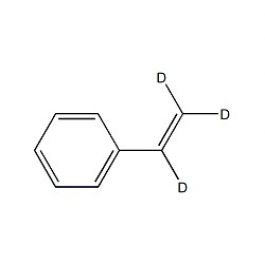New user? / Forgot your password?
0 Item | 0,00 €
Need NMR solvents or supplies? Click here and check out our ARMAR Isotopes catalog!
D3-Styrene
| Item number | 688820 |
| CAS | 3814-93-5 |
| Formula | C8H5D3 |
| Molecular weight | 107,17 g/mol |
| Quantity | 1X10MG |
| storage conditions | 4 °C |
Part of Product groups:
Product Variations:
Product | Catalog No./ CAS No. | Quantity | Price | |
|---|---|---|---|---|
 | 688820 | 1X10MG | ||
 | 688520 | 1X100MG | Please log in. | |
D8-Styrene solution |  | 688521 | 1X5ML | |
 | 681846 | 1X5ML | Please log in. | |
Styrene solution |  | 693515 | 1X5ML | Please log in. |



